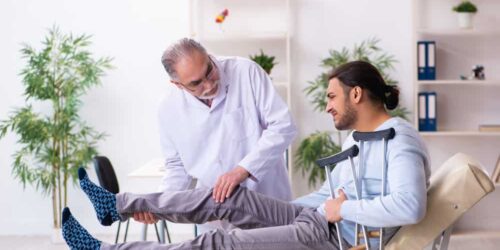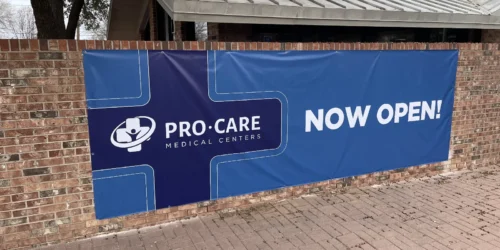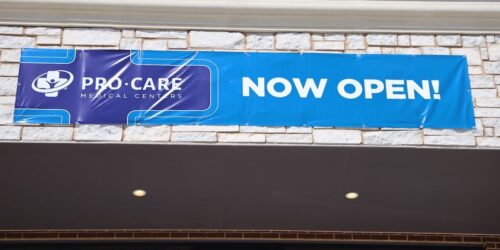San Antonio’s sprawling urban landscape and year-round mild climate make it an appealing city for cyclists. However, as the Alamo City’s bike culture flourishes, the risk of accident and injury also arises. In this article, we’ll discuss the common cycling injuries in San Antonio, their causes, and how to stay safe while enjoying the freedom of the ride.
Bike Accident Statistics for San Antonio, TX
Rate of Accidents and Fatalities:
- In 2022, 10% of all pedestrian and cyclist crashes that resulted in death or injury in Texas happened in San Antonio (despite the city only making up 5% of the state’s population)
- The city recorded 10 cyclist deaths and 35 serious injuries in 2022
- San Antonio is ranked among the 20 most deadly U.S. cities for cyclists, with a rate of 2.2 bike fatalities per 1 million residents per year
- Of those fatalities, only 8% were wearing a helmet
- From 2018 to 2022, bicyclist fatalities in Texas increased by 28%
Common Accident Causes and Locations:
- Over 60% of bicycle accidents happened at intersections, with failing to yield the right-of-way being the leading cause (25%)
- Most common cause of non-intersection accidents was distracted driving (31%)
- Bicycle accidents are less frequent during the summer and winter but peak in the spring and fall
- Most accidents occur during the workweek, particularly on Tuesdays and Fridays
- The afternoon commute (3 p.m. to 7 p.m.) sees the highest number of crashes
High-profile incidents highlight the dangers faced by cyclists. Public petitions and safety campaigns have been launched in response to fatal accidents, pushing for more protective measures like guardrails and traffic signal improvements.
Causes of Bike Accidents
However, we can see that there are still plenty of accidents that occur, and the responsibility often falls on the driver. Here are some common causes of cycling accidents:
Distracted Drivers
Distracted driving is a major contributor to bike accidents in San Antonio (and across the country). Whether it’s texting, talking on the phone, or getting directions, drivers that aren’t fully focused on the road pose a significant threat to cyclists. A momentary lapse in attention can result in severe consequences, especially for those on bikes due to the lack of protection.
Speeding Cars
Speeding is another critical factor in bike accidents. San Antonio’s wide roads can tempt drivers to push the pedal a little harder, reducing reaction times and increasing the severity of impacts. A collision at 40 mph is exponentially more dangerous than one at 25 mph. The impact of a high-speed crash can be devastating, often leading to serious injuries or even fatalities.
Poor Weather or Visibility
While San Antonio generally has beautiful weather, sudden downpours can create treacherous conditions. Rain, fog, and poor lighting conditions reduce visibility for both cyclists and drivers. Wet roads also decrease traction, increasing the risk of slips and falls (while also making it more difficult to slow down or stop). Cyclists need to be extra cautious during difficult weather conditions to avoid accidents.
Failure to Yield
As we highlighted above, intersections are hotspots for accidents, often due to failures to yield. Both drivers and bikers must follow traffic signals and signs. Many drivers fail to recognize cyclists’ rights on the road, leading to dangerous cutoffs at intersections or during lane changes. If either party ignores these rules, the risk of collision rises.
Biker Error
Cyclists aren’t immune to mistakes or distractions, either. Rider errors like running stop signs, failing to yield, or not paying attention also contribute to accidents. Disregarding traffic laws or engaging in risky behaviors can lead to dangerous situations. Overconfidence or inexperience can result in poor decisions with serious consequences. Bikers must practice responsible riding to ensure their safety and that of others on the road.
San Antonio Areas That Require Biking Caution
Cycling through San Antonio can be an amazing experience, with our beautiful trails and historical landmarks. But some areas pose more dangers than others — factors like traffic patterns, road conditions, and inadequate bike infrastructure are some of the leading reasons these areas might be hazardous for cyclists:
Loop 1604
This expansive loop encircling the city is notorious for its often high-speed traffic but heavy congestion during rush hour. The sheer volume of vehicles leaves very little room for error and can lead to serious collisions (both between cars and between cars and bikes). Cyclists using its access roads should exercise caution for merging vehicles and limited shoulder space.
- Safety Tips: Avoid cycling during peak traffic hours. If you have to ride here, use adjacent paths or service roads where available. Always wear high-visibility clothing and ensure your bike is equipped with lights to increase visibility to drivers.
Loop 410/Connally Loop
Another major artery, Connally Loop presents similar challenges to Loop 1604. Its busy interchanges and high-volume traffic (including many large trucks) entering and exiting the highway create a difficult environment for bikes, necessitating constant alertness.
- Safety Tips: Plan your route to avoid Loop 410 if possible. Use designated bike lanes and paths that run parallel to the loop. Stay alert for vehicles merging on and off the highway, and be prepared to take evasive action if necessary.
I-35
Interstate 35 cuts through San Antonio and connects it to other cities in Texas. Cycling on or near I-35 is particularly dangerous due to the heavy and fast-moving traffic. The interstate is designed for high-speed and long-distance travel, and cyclists typically aren’t anticipated by drivers, who may also be tired or distracted from their long journeys.
- Safety Tips: If you have to cross I-35, use designated crossings or overpasses, ensure you are highly visible, and ride defensively.
Bandera Rd
Bandera is a major thoroughfare here in San Antonio that experiences heavy traffic throughout the day. The road serves both commercial and residential areas, leading to a mix of driving behaviors and increased potential for accidents. The lack of dedicated bike lanes further complicates safe navigation.
- Safety Tips: If you need to traverse Bandera Road, stay as far right as possible and use hand signals to communicate your intentions. Be cautious at intersections and watch for cars turning in and out of driveways.
Huebner Rd
Huebner is another busy street in San Antonio that poses risks to cyclists. It winds through residential areas so its curves and hills can obscure bikers from drivers’ view. The mix of school traffic and commuters adds yet another layer of complexity.
- Safety Tips: Avoid riding during rush hours when traffic is heaviest. Utilize nearby bike paths and trails if available. Always wear reflective gear and use lights to increase your visibility, especially in dusk or dawn conditions. Be extra cautious at intersections and driveways where cars might turn unexpectedly.
Common Cycling Injuries
From obviously critical things like your head to inadvertent injuries as you try to brace yourself, bodily harm from cycling accidents can affect:
Head
Head injuries are among the most severe cycling injuries and can range from minor concussions to traumatic brain injuries. The human skull, while remarkable, is no match for the forces involved in a high-speed collision or fall — this is why it’s so important to wear a helmet (more on this below).
Knee/Leg
Knee and leg injuries are common in falls or collisions. These injuries can include fractures, dislocations, and soft tissue damage. However, overuse injuries like patellofemoral pain syndrome or IT band friction syndrome can also sideline riders. Protective gear and proper cycling techniques can help reduce the risk of these issues.
Shoulder/Arm
In falls, riders often instinctively extend their arms to break their fall. This can result in broken collarbones, dislocated shoulders, fractured wrists, and more. The forces involved can also lead to rotator cuff injuries or nerve damage.
Road Rash
Road rash occurs when a cyclist slides across the pavement, causing skin abrasions. While often considered a minor injury, severe road rash can be incredibly painful and lead to infections or require medical treatment. Wearing long sleeves and pants, (even in Texas weather) can provide an extra layer of protection.
How to Prevent Injuries & Accidents While Cycling
To minimize the risk of these injuries, there are some key actions and preventive measures you can take:
Wear a Helmet
Wearing a helmet is the single most effective way to prevent head injuries in a bike accident. Your helmet acts as a protective barrier between your skull and any hard surface (the ground, a car, etc.), absorbing the impact and reducing the risk of serious injury. Make sure your helmet fits snugly and is properly secured. You should also choose one that meets safety standards like the CPSC (Consumer Product Safety Commission) sticker, so you know it has passed strict testing for quality and effectiveness. And remember, a helmet only works if you’re properly wearing it.
Use Hand Signals
Hand signals are essential for communicating on the road. Before making a turn or stopping, extend your arm fully to indicate your intentions. For a left turn, extend your left arm straight out. For a right turn, extend your left arm upwards or your right arm straight out. To signal a stop, extend your left arm downward. These signals alert drivers and fellow cyclists, reducing the chance of a collision. Practicing these signals until they become second nature can significantly reduce the risk of accidents and misunderstandings in congested areas.
Be Visible
Being seen is key to safety, especially in low-light conditions. Equip your bike with front and rear lights as well as reflective tape on your frame and wheels to increase visibility from all angles. Wear bright, reflective clothing to stand out during the day and at night. You could also consider a high-visibility vest or jacket with reflective strips. Additionally, some cyclists attach reflective ankle bands to create motion that catches the eye of drivers.
Avoid Blind Spots
Blind spots are areas around a vehicle where the driver can’t see through their mirrors (large vehicles like trucks and buses have bigger blind spots). To avoid these, never linger directly beside a vehicle. If you can’t see the driver in their side mirror, they probably can’t see you. When passing, do so quickly and confidently. At intersections, position yourself where drivers can see you, such as in front of or well behind vehicles. This practice is especially important when approaching right-turning vehicles, who probably won’t expect someone to be between them and the curb.
Check Equipment
Regular maintenance checks on your bike can prevent mechanical failures at critical moments. This includes checking your brakes to make sure they’re responsive and confirming that your tires are properly inflated. Check the chain for lubrication and that it moves smoothly. Tighten any loose bolts or parts. Carry a basic repair kit, including a spare tube, tire levers, a multi-tool, and a pump, to handle minor issues on the go.
Obey All Traffic Laws
Riders have the same rights and responsibilities to follow traffic laws as drivers. This includes stopping at red lights and stop signs, yielding to pedestrians, and riding in the same direction as traffic. For example, the “Three Feet Rule” requires cars to maintain at least three feet of clearance when passing a cyclist (six feet for trucks). Understanding and following these laws results in more predictable behavior, which helps drivers anticipate your actions.
Stay Alert
Situational awareness is your best defense. Staying alert is crucial for anticipating and reacting to potential hazards. Avoid distractions like using your phone or listening to music with noise-canceling headphones. Keep your head up and scan the road ahead for obstacles, cars, and pedestrians. Make eye contact with drivers at intersections to ensure they see you. Ride defensively, assuming that drivers may not notice you, and be prepared to take evasive action if necessary. On trails, watch for sudden changes in terrain or other cyclists and pedestrians who may not be as aware of your presence.
Injured in a Cycling Accident?
Biking around San Antonio comes with a lot of benefits, from improved health to reduced carbon footprint. But understanding how to prevent injuries and who to see if you’ve been in a collision is important for anyone frequently riding around the city. If you’ve recently been in an accident — either on a bike or in a car — it’s vital to not delay or skip treatment. Injuries that might seem minor now could cause significant issues in the future if not treated early. Pro-Care’s team of San Antonio doctors is experienced in a variety of fields from pain management, orthopedics, and neurology to chiropractors and counselors.



